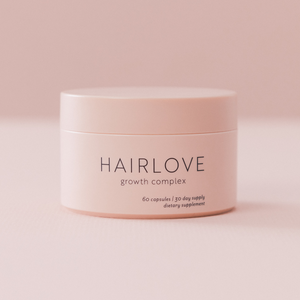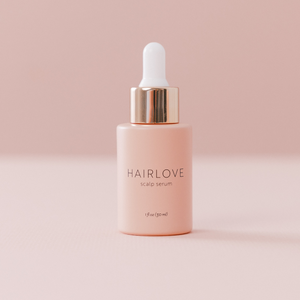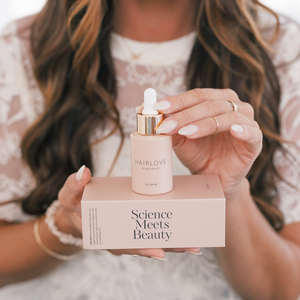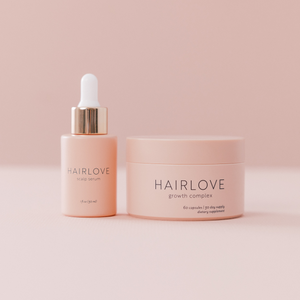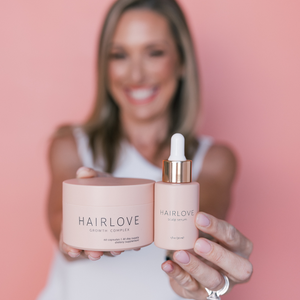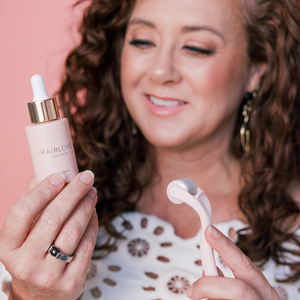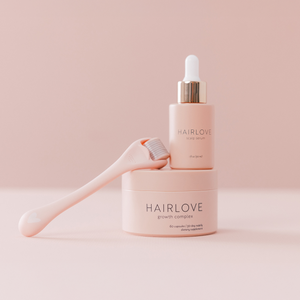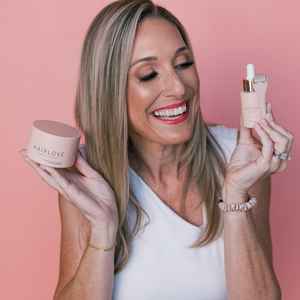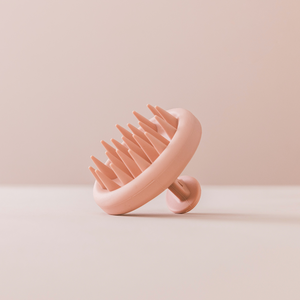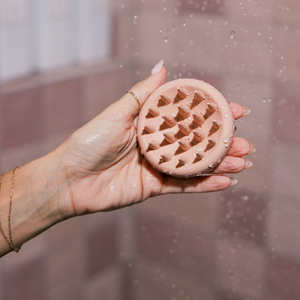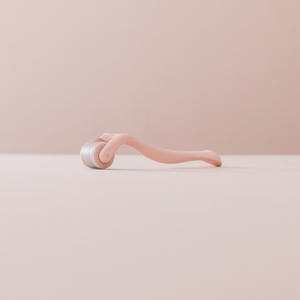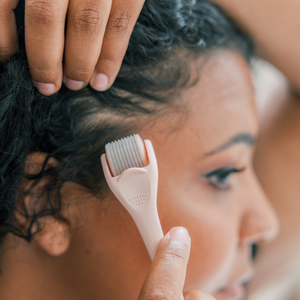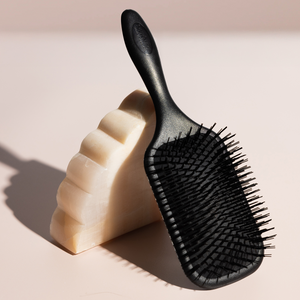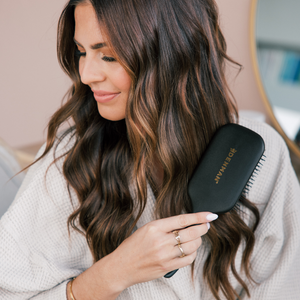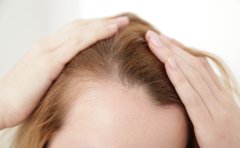Hi beauty! We are in the middle of winter, and I don’t know about you, but I miss all the sunshine! Winter can take a toll on your body from your skin care to mental health. During this time of the year, a lot of us can feel the winter blues. In more serious cases, that’s referred to as seasonal affective disorder (SAD).
In our bodies, so much is connected, including our mood and physical health. Which is why the winter blues can actually slow your hair growth! Let’s take a closer look at what is SAD, how SAD relates to hair loss, and tips to help this winter.
What Is SAD?
Seasonal affective disorder, or SAD for short, is a type of major depressive disorder with recurring episodes of depression during specific seasons, typically fall and winter. Here’s some of the common symptoms of SAD:
- Appetite changes
- Changes in sleep patterns
- Difficulty concentrating
- Feelings of hopelessness or negativity
- Loss of interest or pleasure
- Low energy
- Oversleeping
- Persistent low mood
- Weight gain
What Causes SAD?
We don’t know the exact cause of SAD, but these three factors may play a part:
- Circadian rhythm. The decrease in sunshine during fall and winter impacts your biological clock or circadian rhythm. Too little sunlight can disrupt your body's internal clock, leading to the onset of SAD.
- Melatonin levels. Melatonin, the hormone responsible for regulating sleep patterns and mood, may experience fluctuations during seasonal transitions, potentially leading to SAD.
- Serotonin levels. SAD may be linked to a drop in serotonin, a crucial neurotransmitter influencing mood. The lack of sunlight during fall and winter can contribute to lower serotonin levels.
The Link Between SAD and Hair Loss
Getting the winter blues definitely doesn’t sound fun, and unfortunately it may also trigger hair loss. SAD is linked to our hair growth cycle, which consists of four phases: anagen (growth), catagen (transitional), telogen (resting), and exogen (shedding). Changes in mood and overall well-being can influence this cycle. Let’s look at the main ways SAD disrupts the hair growth cycle.
- Blood circulation. Less sunlight and a change in your mood can affect blood circulation in your scalp. To get more technical, sunlight stimulates the production of nitric oxide, a compound that dilates blood vessels and improves blood flow. Poor blood circulation to the hair follicles may compromise their nourishment and impede the growth phase, leading to extra hair shedding.
- Hormonal imbalances. Seasonal changes, particularly during fall and winter, can disrupt the hormonal balance in your body. Hormones play a crucial role in regulating various bodily functions, including the hair growth cycle. Imbalances — like fluctuations in the stress hormone cortisol, melatonin, and sex hormones — may influence the length and intensity of each phase of the cycle.
- Immune response. SAD-related changes in mood and stress levels can impact the immune response in the body. Hair follicles are sensitive to immune activity, so any sudden changes to your immune function can disrupt the balance of the hair growth cycle. An overactive immune response may lead to inflammation in the scalp — another trigger for hair loss and damage.
- Neurotransmitters. Neurotransmitters like serotonin can take a hit from SAD, which is bad news for your hair since neurotransmitters play a key role in signaling pathways related to hair growth. Changes in neurotransmitter levels can impact the communication between nerve cells and hair follicles. This can influence the duration and efficiency of the anagen (growth) phase.
- Stress-induced telogen effluvium. Stress and mood disorders can have major effects on hair health. Elevated stress levels may interrupt your hair growth cycle, causing more hair to enter the telogen (resting) and exogen (shedding) phases. This can lead to increased shedding and, over time, contribute to hair thinning or loss. Chronic stress can also trigger a hair loss condition known as telogen effluvium.
Winter Blues and Hair Growth Tips
If you’re feeling down and struggling without sunshine, that’s okay! There’s ways to combat the winter blues and SAD-related hair loss to keep yourself on the right track on your hair journey. Here’s my tips for hair care during the winter months:
- Consistent sleep patterns. If you’re struggling with SAD, you may be having a hard time sleeping or, on the opposite end, oversleeping. Sleep patterns can impact mood and influence the health of hair follicles, so look to get a healthy amount of sleep, and practice good sleep hygiene. If you need even more help to get your beauty rest, try a natural sleep product like our Beauty Sleep Complex.
- Daily hair vitamin. Sometimes your body needs some extra help to get the nutrition it needs. Our Growth Complex is a revolutionary daily vitamin to promote the growth stage of the hair growth cycle and provide the exact nutrients your hair needs to thrive!
- Exercise regularly. Even if you can’t get outside, find ways to get active indoors, either at the gym or at home. Regular physical activity boosts endorphin levels, enhances mood, and supports your overall well-being. If you’re not sure where to start, try these at-home exercises.
- Gratitude journaling. It sounds corny, but gratitude has been found as a key factor in a positive mindset and combating stress. Even writing for a few minutes each day can shift your perspective!
- Healthy hair care routine. At times when your hair is more prone to damage or hair loss, it’s important to follow a consistent hair care routine. Use gentle hair products such as a Denman Hair Brush and Luxury Hair Towel after you shower. You may also want to incorporate a serum to help protect and moisturize your hair, like our Nourish + Repair Serum.
- Light therapy. Try light therapy at home using a lightbox to simulate natural sunlight exposure. Light therapy can help boost your mood and lessen the symptoms of SAD, as well as support your hair health.
- Nutrient-rich diet. Diet makes such a big difference for your hair. Add nutrients for hair health — including biotin, omega-3 fatty acids, and vitamin D — into your nutrition plan. Check out our entire article on hair nutrition for more tips!
- Outdoor activities. When you can, spend time outdoors during daylight hours to maximize exposure to natural sunlight, even on cloudy days. Plan enjoyable winter activities to add fun to the season.
- Professional counseling. If you are overwhelmed by personal and mental challenges, or are experiencing severe SAD, consider professional counseling or therapy to help. Your well-being should come first!
- Scalp massage. Scalp massages can be a great way to stimulate blood circulation and promote nutrient delivery to hair follicles. And the best part — you can do them anytime, anywhere, no matter the season! Our Detox Scalp Massager is specially designed to promote hair growth and be gentle on the scalp.
- Stress management and self-care. Since stress is such a major factor in both SAD and hair loss, stress management, self-care, and mindfulness are more critical than ever. Deep breathing exercises, meditation, or yoga can help reduce stress levels and support your hair growth cycle.
I hope these tips are helpful these next few months as we head into spring. Remember, it’s a marathon, not a sprint, so it’s okay to have setbacks along the way. What’s most important is keep pushing forward — the sunshine will come, and so will your beautiful hair growth!
xo - Kaley

